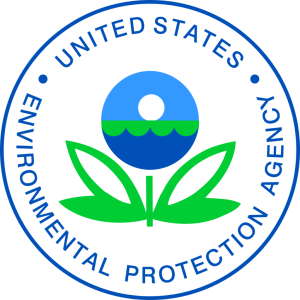Today, the U.S. Environmental Protection Agency (E.P.A.) announced $62,283,000 for essential drinking water infrastructure upgrades in Wyomig, part of a national effort through the Drinking Water State Revolving Fund (D.W.S.R.F.). Thanks to a $6 billion boost from President Biden’s Bipartisan Infrastructure Law, E.P.A. is increasing the investments available to rebuild the nation’s water infrastructure.
“Every community deserves access to safe, clean drinking water,” said E.P.A. Administrator Michael S. Regan. “Thanks to President Biden’s historic infrastructure investments in America, we have an unprecedented opportunity to revitalize America’s drinking water systems, support the Biden-Harris Administration’s goal of removing 100% of lead pipes across our country, and protect communities from P.F.A.S. pollution.”
“E.P.A. is committed to protecting the health of Wyoming’s residents by ensuring the water flowing into their taps is reliably safe long into the future,” said E.P.A. Regional Administrator KC Becker. “This funding is an invaluable investment in public and environmental health.”
Progress made in Wyoming under the first wave of D.W.S.R.F. actions includes amending state regulations to expand the use of State Revolving Fund grant set-aside funds. This amendment will allow the funding of technical and financial assistance activities for underserved communities, as well as provide funding assistance to communities for source water protection.
The Biden-Harris Administration is committed to strengthening the nation’s water infrastructure while providing significant resources to address key challenges, including climate change, emerging contaminants like per and poly-fluoroalkyl substances (P.F.A.S.), and cybersecurity.
The D.W.S.R.F. allotments to states are based on the results of E.P.A.’s 7th Drinking Water Infrastructure Needs Survey and Assessment (D.W.I.N.S.A.). The survey, which the 1996 Safe Drinking Water Act requires, assesses the nation’s public water systems’ infrastructure needs every four years, and the findings are used to allocate D.W.S.R.F. grants to states.

As a result, the drinking water utilities need $625 billion in infrastructure investments over the next 20 years to ensure the nation’s public health, security, and economic well-being.
At the direction of Congress, E.P.A.’s 7th Drinking Water Assessment, for the first time, included survey questions focused on lead service lines and is projecting a national total of 9.2 million lead service lines across the country. These best available national and state-level projections of service line counts will help advance a unique opportunity to employ a separate lead service line allotment formula for the Bipartisan Infrastructure Law D.W.S.R.F. Lead Service Line Replacement Funding that is based on need.
Almost $3 billion of the funding announced today will be explicitly provided for lead service line identification and replacement, taking a critical step toward the Biden-Harris Administration’s goal of achieving 100% lead-free water systems.
President Biden’s Bipartisan Infrastructure Law is investing over $50 billion in water and wastewater infrastructure improvements across the country between F.Y. 2022 and F.Y. 2026. In its second year of implementation, $6 billion of Bipartisan Infrastructure Law funding will be available to states, Tribes, and territories through the D.W.S.R.F. Of that funding, the Bipartisan Infrastructure Law will invest $3 billion in lead service line identification and improvement, $800 million to address P.F.A.S. and other emerging contaminants, and $2.2 billion in other critical drinking water system improvements.
Approximately $500 million will also be available through the D.W.S.R.F. annual appropriations established by the Safe Drinking Water Act.
E.P.A. is committed to ensuring every community has access to this historic investment and has centralized increasing investment in disadvantaged communities within its implementation. Implementing the Bipartisan Infrastructure Law calls for strong collaboration, and E.P.A. continues to work in partnership with states, Tribes, and territories to ensure that communities see the full benefits of this investment. In addition, E.P.A. is strengthening its water technical assistance programs to support communities in assessing their water needs and applying for their fair share of this historic investment.
President Biden’s Investing in America agenda is growing the American economy from the bottom up and middle out – from rebuilding our nation’s infrastructure to creating a manufacturing and innovation boom powered by good-paying jobs that don’t require a four-year degree to building a clean-energy economy that will combat climate change and make our communities more resilient.
More information, including state-by-state allocation of 2023 funding and information on the D.W.I.N.S.A.
More information on the Bipartisan Infrastructure Law.







